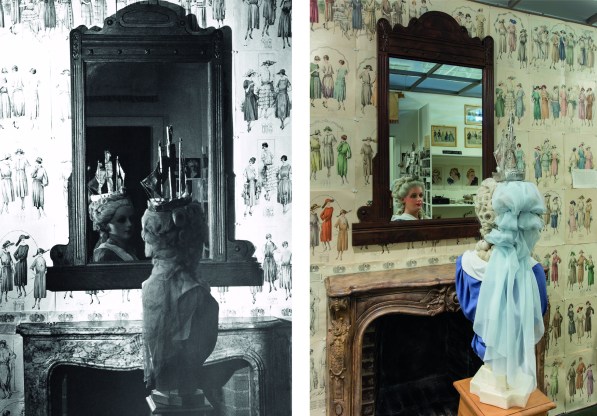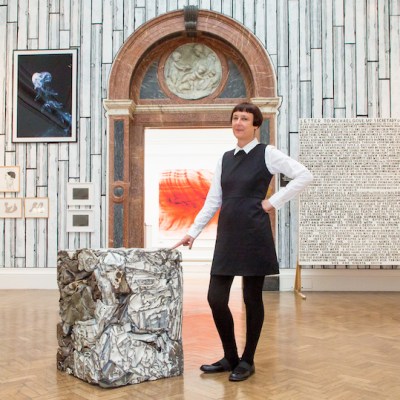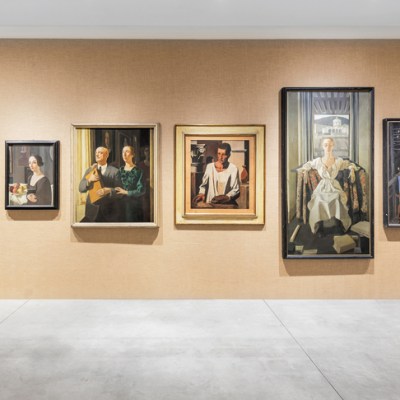This review of ‘Grandfather: A Pioneer Like Us (1974)’ at the Institute of Contemporary Art (4 February–22 April) and ‘Harald Szeemann: Museum of Obsessions’ (6 February–6 May) at the Getty Center, both Los Angeles, was originally published in the June issue of Apollo. The exhibitions are now on view in Bern.
In 1972, Carl Andre wrote a note to Harald Szeemann in response to the Swiss curator’s invitation to participate in documenta 5. ‘DO YOU HAVE AN ART SECTION?’ asked the irascible artist. As it turned out, the sarcastic enquiry was not entirely unfounded. Szeemann’s radical curatorial mission, developed in documenta 5 and pursued over the next three decades of his career, was to pollute the category of art history with artefacts from the entire field of visual culture, and to subordinate the static art object to a more fluid representation of a creative individual’s interior world. At documenta 5, there were areas featuring political propaganda, the art of the mentally ill, advertising, and science fiction. (A proposed pornography section was cancelled.)
Andre’s note appears in the exhibition ‘Harald Szeemann: Museum of Obsessions’, which originated at the Getty Center, Los Angeles, and travels to the Kunsthalle Bern this month. The exhibition is drawn primarily from Szeemann’s vast archive – acquired by the Getty Research Institute in 2011 – of notes, drawings, correspondence, photographs, books and other exhibition ephemera, but it also incorporates works by artists Szeemann championed, such as Emma Kunz and Adolf Wölfli, in a career that lasted from the 1950s until after the millennium (he died in 2005, aged 72).
The Getty Center exhibition, while crammed with fascinating diversions, is hampered both by its breadth of focus and the granular nature of its component parts. Infinitely more compelling, however, is ‘Grandfather: A Pioneer Like Us (1974)’, a satellite presentation across the city at the Institute of Contemporary Art, Los Angeles (ICA LA), in effect an exhibition within an exhibition within an exhibition.
In 1974, finding himself without professional prospects in the wake of financial and artistic scandals surrounding documenta 5, Szeemann curated a show in his Bern apartment. Few saw it at the time, but ‘Grandfather: A Pioneer Like Us’ (the original German title was ‘Grossvater: Ein Pionier wie wir’) has since become a foundational event in the Szeemann mythos, a narrative twist which coloured everything that came after. It included nothing recognisable as contemporary art, consisting instead of prints, documents, photographs, personal possessions and furnishings left to Szeemann by his grandfather, Étienne, a hairdresser and wigmaker who had died three years before. The bulk of this material was bequeathed to the Getty as part of Szeemann’s archive, and when Glenn Phillips and Philipp Kaiser, the curators of ‘Museum of Obsessions’, realised that they had a nearly complete Szeemann exhibition on their hands, they decided to restage it as faithfully as possible.
Left: installation view of bust with the à la Belle Poule hairstyle in ‘Grandfather: A Pioneer Like Us’, in Harald Szeemann’s apartment, taken over by Galerie Toni Gerber, Bern, 1974. Photo: Balthasar Burkhard; courtesy Getty Research Institute, Los Angeles; © J. Paul Getty Trust. Right: installation view of ‘Grandfather: A Pioneer Like Us’ at the Institute of Contemporary Art, Los Angeles, 2018. Photo: Brian Forrest; courtesy Institute of Contemporary Art, Los Angeles

Thanks to the deep pockets of the J. Paul Getty Trust, the exhibition – co-produced by the ICA LA, whose director Elsa Longhauser was a friend and collaborator of Szeemann – consists of an immaculate reconstruction of Szeemann’s apartment, a freestanding wooden structure built inside the ICA LA’s large main gallery. The level of simulation is dizzying: the grey carpet and textured walls, the faux-antique furniture (recreated from photographs with the aid of Hollywood set fabricators) and the thousands of white drawing-pins, which are actually magnets. Even a stuffed Chihuahua once belonging to Szeemann’s grandmother – now lost – was resurrected with a surrogate dead dog and a specially aged harness. The real and symbolic phases of death, revivification, artificial ageing and archival preservation entailed by this exhibition themselves constitute a meta-commentary on Szeemann’s memorialising endeavour. When ‘Museum of Obsessions’ travels to Bern, ‘Grandfather: A Pioneer Like Us’ will accompany it, reoccupying its original location on the Gerechtigkeitsgasse: miraculously, the current tenants have been persuaded to vacate their home while it is returned to its 1974 condition (until 2 September).
As it happens, Szeemann himself was involved in a number of reconstructions of environments and artworks in his own exhibitions. In his 1983 exhibition ‘Der Hang zum Gesamtkunstwerk: europäische Utopien seit 1800’ (‘Towards the Total Work of Art: European Utopias Since 1800’), he worked with a theatre designer to reconstruct Kurt Schwitters’ Hannover Merzbau (1923–37). More recently, in 2013 Germano Celant collaborated with Thomas Demand and Rem Koolhaas to recreate what is probably Szeemann’s most famous show, ‘Live in Your Head: When Attitudes Become Form’ (1969), in the Venetian palazzo occupied by the Fondazione Prada. In the case of ‘Grandfather: A Pioneer Like Us’, however, since most of the material is original and – I would argue – the domestic setting is integral to the significance of the show, the term ‘reconstruction’ is perhaps less appropriate than ‘reinstallation’, especially in its Bern iteration.
The French conceptual artist Daniel Buren derided documenta 5 as ‘the exhibition of the exhibition as a work of art’; ‘Grandfather: A Pioneer Like Us’ embraces this classification. Mercifully, perhaps, Phillips and Kaiser have included in their display scant interpretive material – only monitors showing documentary footage about the 1974 exhibition and Szeemann’s subsequent work.
My interest is not really in reviewing Szeemann’s exhibition so much as reviewing that of Phillips and Kaiser, who must assume their share of authorship in this endeavour, despite the care they have taken to handle this archival material with minimal evident interference. But what do we learn about Szeemann’s original ‘Grossvater: Ein Pionier wie wir’ from their reinstallation? First, it feels strikingly amateurish, the drawing pins and typed labels giving it the feel of a regional historical museum, and the crowded arrangement seemingly designed to satisfy the completist imperatives of the obsessive curator. Nowhere does it feel like a performance of curatorial virtuosity. Surprisingly, though, it is sentimental (as in the typed memories of Étienne from his surviving descendants) and also idiosyncratic and funny – especially that Chihuahua.
While the restaging of ‘Grandfather: A Pioneer Like Us’ looks back doubly – primarily to 1974 and secondarily to the subsequent epochs of Étienne Szeemann’s life – it looks forward doubly as well. Szeemann’s 1974 show was itself groundbreaking, outlining a new model of curating despite consciously emulating an archaic display aesthetic. Importantly, Szeemann’s experiments in exhibition-making still feel challenging, and weird, and brave. Despite his inestimable influence, exhibitions such as ‘Grandfather: A Pioneer Like Us’ are still the exception, not the rule.
‘Harald Szeemann: Museum of Obsessions’ is at the Kunsthalle Bern and ‘Harald Szeemann – Grandfather: A Pioneer Like Us’ at Gerechtigkeitsgasse 74, Bern, until 2 September.
From the June 2018 issue of Apollo. Preview and subscribe here.



